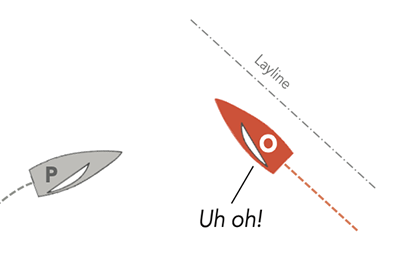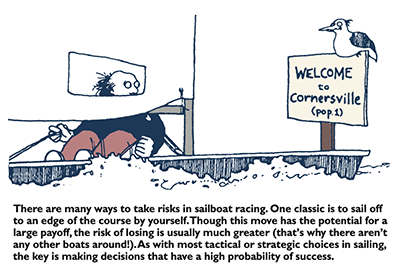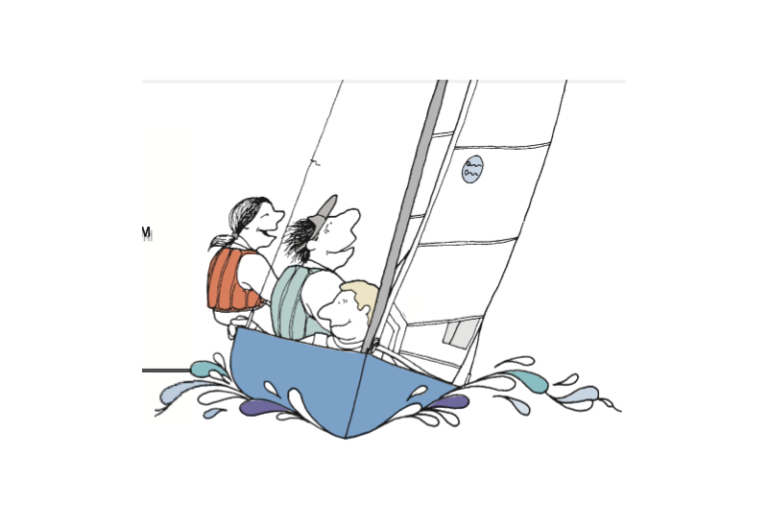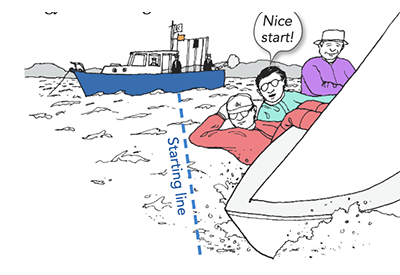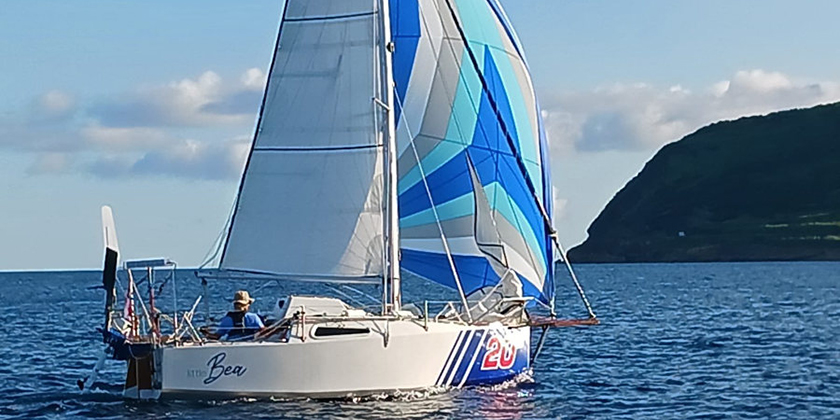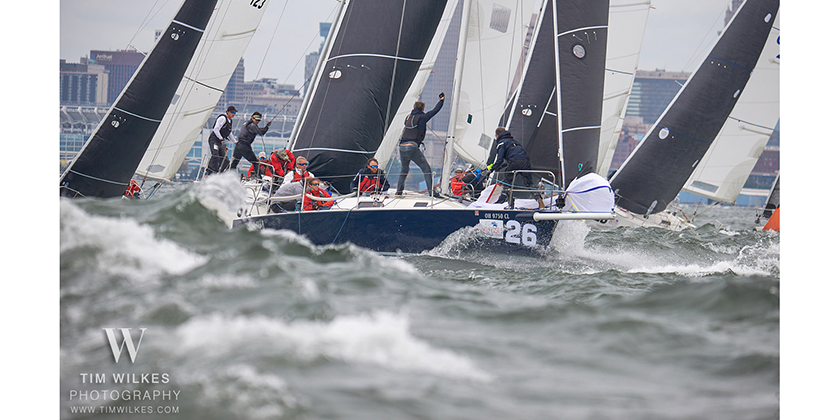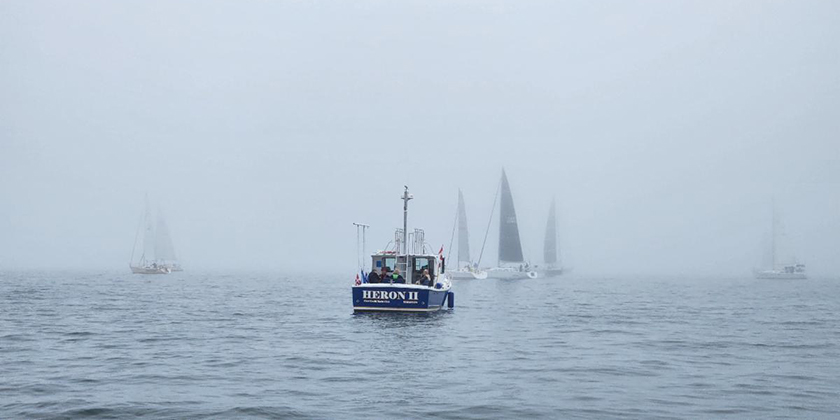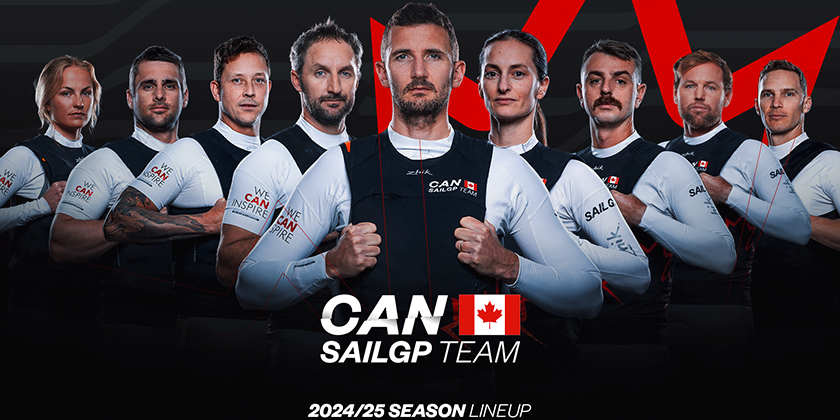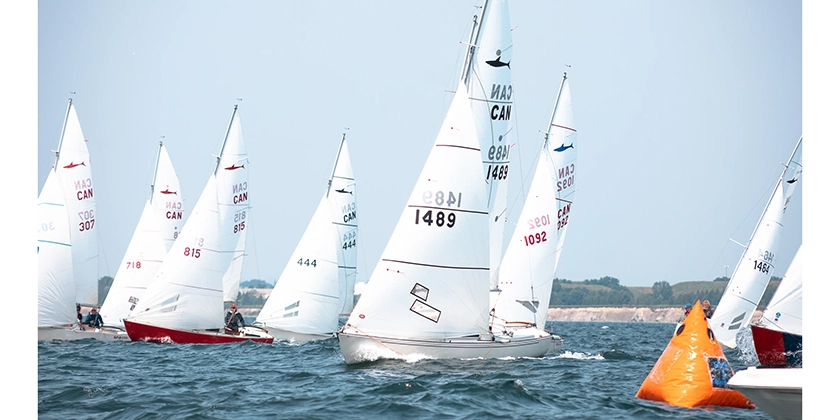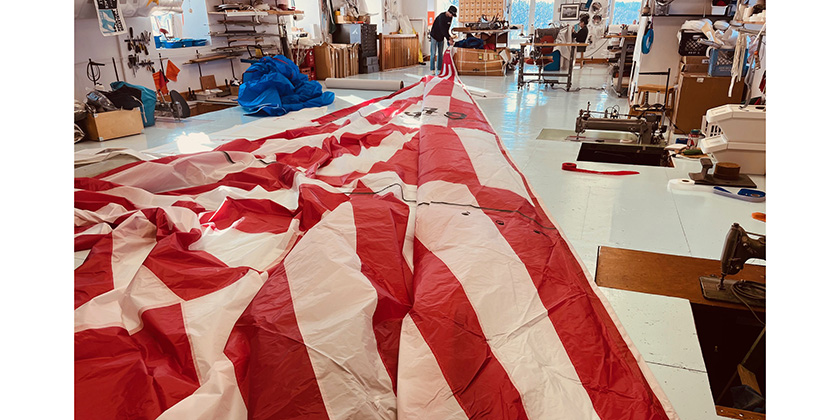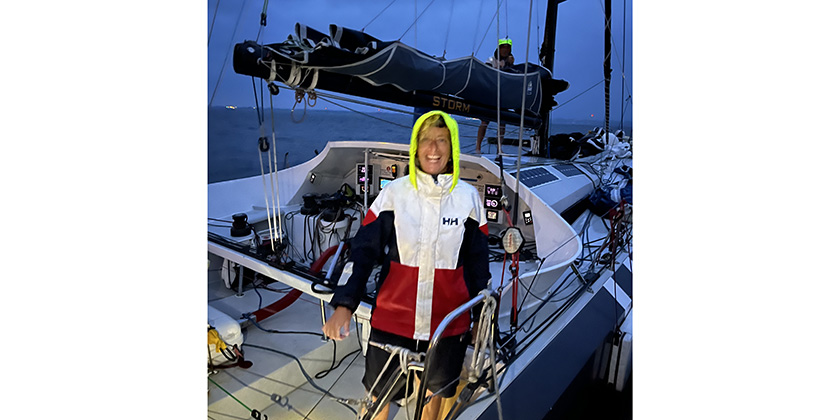Speed & Smarts: Take Control of Your Mainsail – Part 2 – Traveler
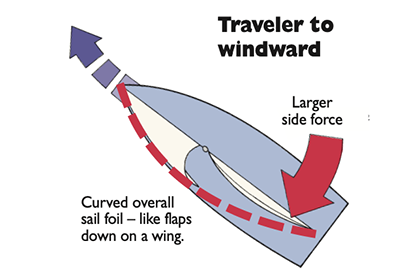
August 2, 2023
Take Control of Your Mainsail – Part 1
Just like flaps on an airplane wing
The traveler controls the angle of attack of the mainsail in much the same way as hydraulic cylinders control the flaps on an airplane wing. When the plane is going slowly and needs a lot of lift (e.g. to take off or land), the flaps go down to make the wing more curved and more angled to the oncoming wind. Similarly, when a boat needs to point higher, the traveler goes to windward so the sail is in the middle of the boat. This makes the entire sail plan more curved and generates lift and helm.
When the plane wants to go fast, the flaps are retracted to make the wing more streamlined and reduce drag. A boat is the same. When speed is the goal, the traveler drops down so the mainsail is more in line with the headsail. This minimizes drag and reduces windward helm so the boat can go faster forward.
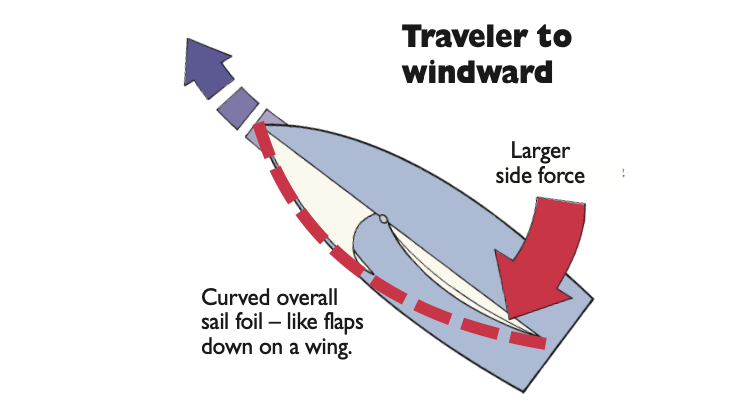
When the traveler is pulled to windward so the boom is near centerline, the leech of the sail ‘kicks’ the air flow to windward, creating a large side force to leeward at the stern. This creates windward helm and makes the bow turn to windward.
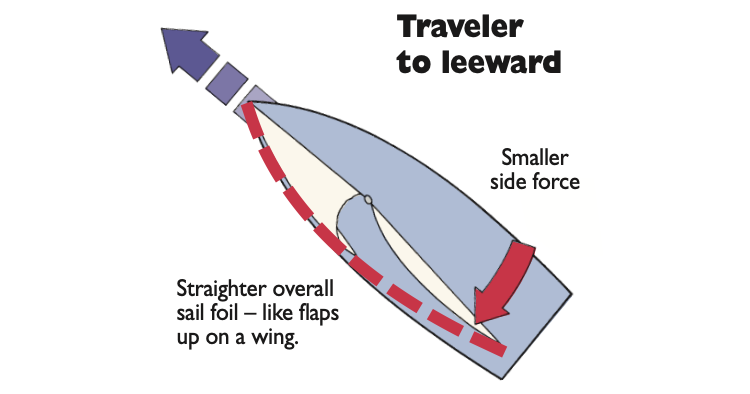
When the traveler is eased to leeward, the mainsail leech is more open. This allows the air to flow more easily off the back of the sail. As a result, there is less sideways force on the stern of the boat, and the driver feels less windward helm.
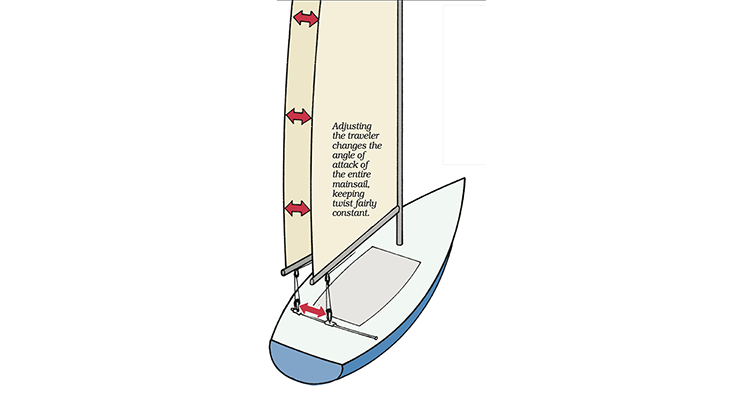
On almost every boat, it’s best to carry the boom near the centerline of the boat when sailing upwind. This provides an optimal combination of speed and pointing. In order to get the boom on centerline, you have to position the traveler car to windward. If you leave the traveler in the middle, it will be impossible to trim the mainsheet hard enough to get the boom on centerline – and if you try to do this you will end up with way too much leech tension.
The goal is to use the mainsheet and traveler in concert to position the boom near centerline and have the right amount of sheet tension (twist) at the same time. In light air and/or chop you can’t trim the sheet very hard, so the traveler has to be all the way to windward. As the wind increases and you can sheet harder, the traveler doesn’t have to be so high to keep the boom centered.
On some boats like this Sonar, it is actually fast to sail upwind with the boom above centerline until you start to get overpowered.
Play traveler or mainsheet?
When you’re sailing upwind and you get an overpowering puff, it’s not always clear how to depower. Should you ease the mainsheet so the mainsail twists more and spills power primarily from the upper part of the sail? Or should you keep the mainsheet tight and drop the traveler instead, reducing the sail’s angle of attack and therefore the power it produces?
Here are some factors to consider when thinking about how to do this:
Sea state – When you are sailing in bumpy water, the entire mainsail moves around a lot relative to the wind. In these conditions, it’s critical to be able to adjust the amount of twist in the sail, so play the mainsheet. This gives you a better chance that at least some part of the main will be at the right angle of attack each moment. When the water is flat, it’s OK to sail with less twist and less adjustment of twist, so it often works well to play the traveler.
Boat type – Lighter, faster boats (e.g. skiffs and multihulls) tend to perform better when they trim the main with a wider range of twist, so they rely primarily on mainsheet. Heavier, slower boats typically sail with less twist, and they don’t change the amount of twist as much, so they can use the traveler more.
Sail design – Mains with big roaches (typically with full-length battens at the top) are very sensitive to small changes in twist, so it’s important to play the mainsheet to change gears and keep the boat going fast. Traditional sails with less roach are more suited for playing the traveler.
Traveler system – Sometimes the choice of how to trim the main is dictated by the layout of your boat. Is it easier to play the mainsheet or traveler? Is it physically possible for the helmsperson to adjust both quickly? Is there another crewmember who can play either one or both?
Wind conditions – Occasionally the technique of trimming the main needs to be changed to fit the wind. You may normally drop the traveler to depower the boat in puffs, but if you have a day when the puffs are much stronger than the lulls, will you be able to depower the boat enough using just the traveler? Sometimes you need to play the mainsheet instead, or in addition.
Personal preference – In the end, the technique you choose for trimming the main and adjusting its shape depends a lot on what makes you comfortable and what you have found to work best in the past. My personal preference in most boats is to play the sheet as much as possible. I adjust the traveler for upcoming trends in the wind velocity and then use the sheet for small, quick changes.
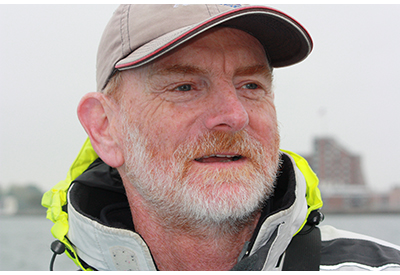 Dave Dellenbaugh is the publisher, editor and author of Speed & Smarts, the racing newsletter. He was the tactician and starting helmsman on America3 during her successful defense of the America’s Cup in 1992 and sailed in three other America’s Cup campaigns from 1986 to 2007. David is also two-time winner of the Canada’s Cup, a Lightning world champion, two-time Congressional Cup winner, seven-time Thistle national champion, three-time Prince of Wales U.S. match racing champion and past winner of the U.S. Team Racing Championship for the Hinman Trophy. He is currently a member of the US Sailing Racing Rules Committee (and was its chairman from 2005-2008).
Dave Dellenbaugh is the publisher, editor and author of Speed & Smarts, the racing newsletter. He was the tactician and starting helmsman on America3 during her successful defense of the America’s Cup in 1992 and sailed in three other America’s Cup campaigns from 1986 to 2007. David is also two-time winner of the Canada’s Cup, a Lightning world champion, two-time Congressional Cup winner, seven-time Thistle national champion, three-time Prince of Wales U.S. match racing champion and past winner of the U.S. Team Racing Championship for the Hinman Trophy. He is currently a member of the US Sailing Racing Rules Committee (and was its chairman from 2005-2008).
You can subscribe to the Speed & Smarts newsletter HERE.

